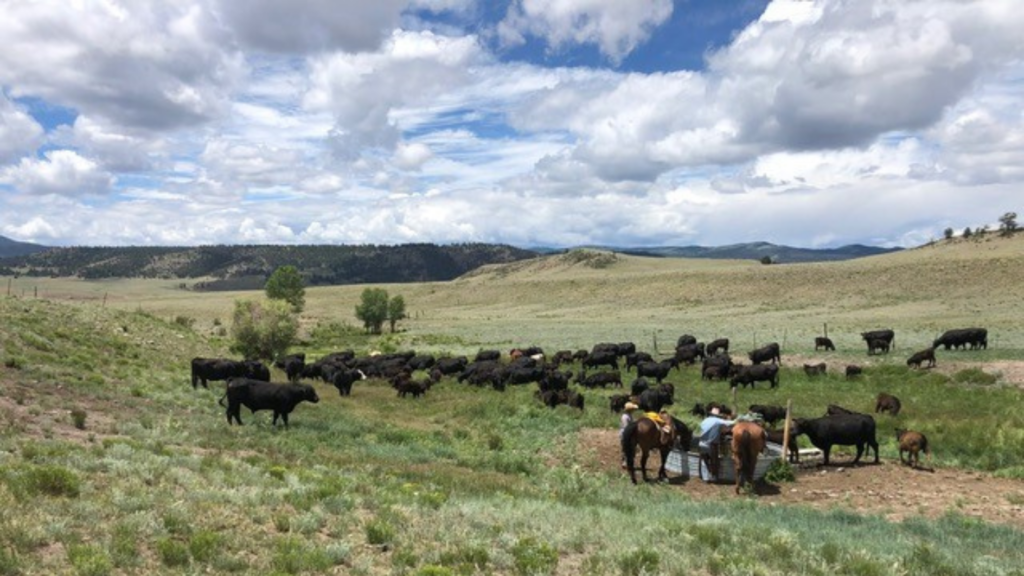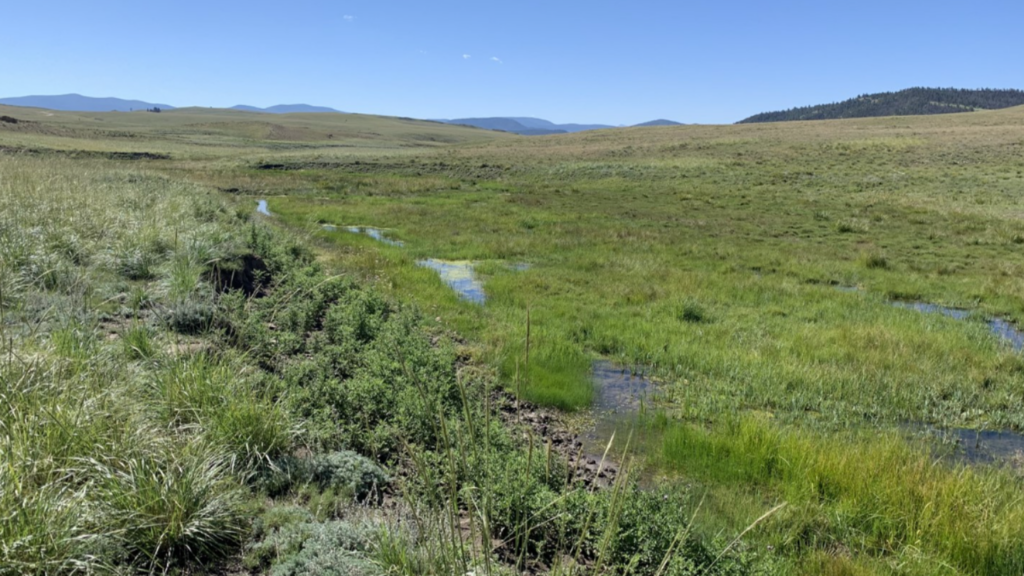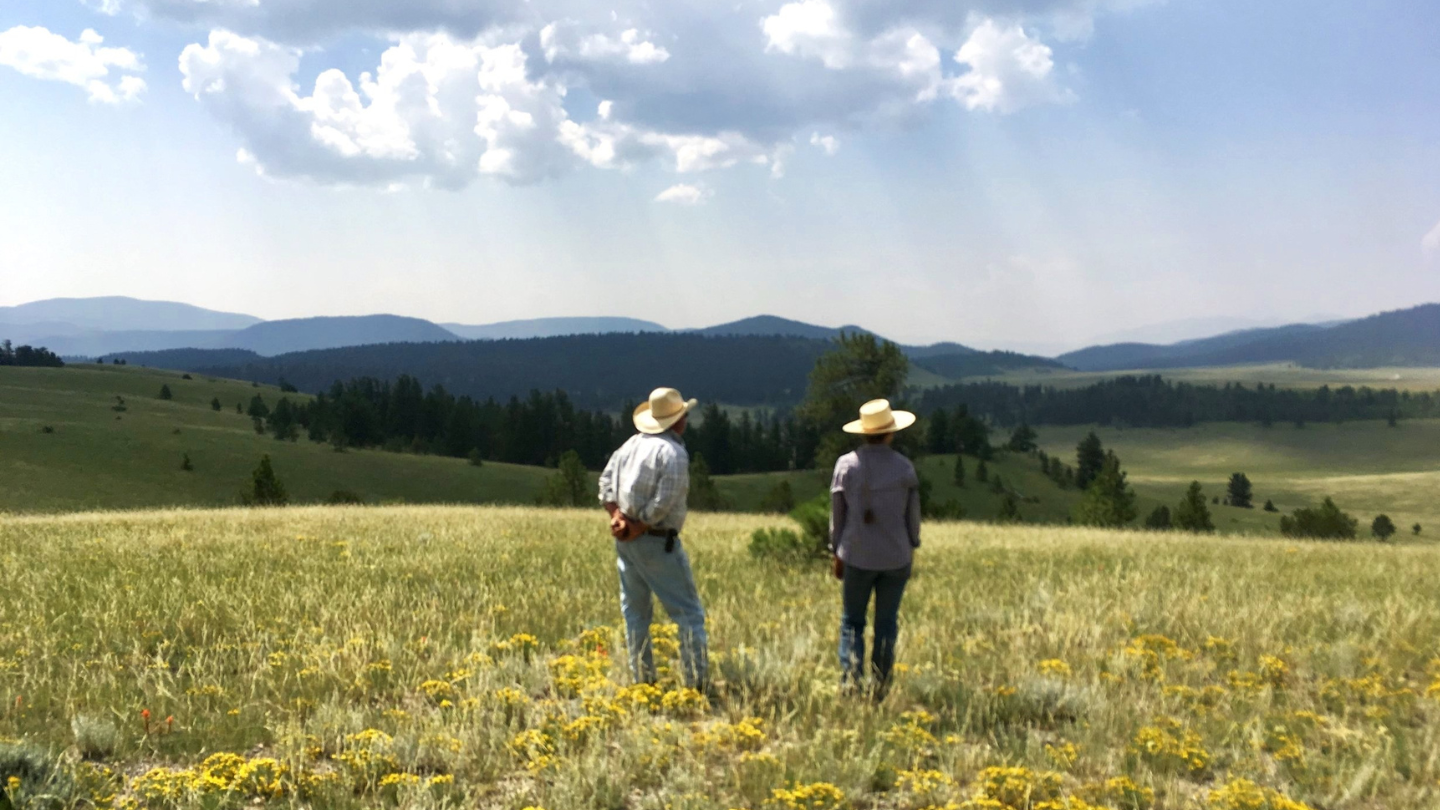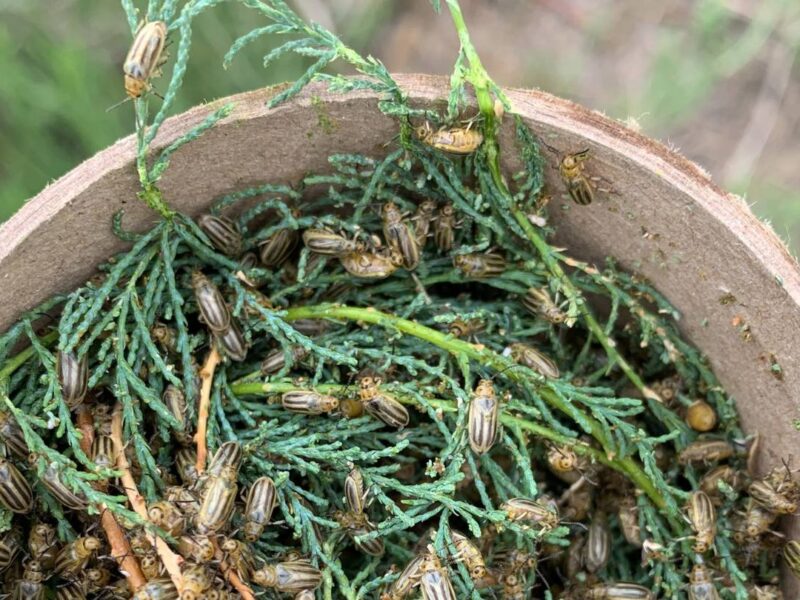In the heart of south-central Colorado, Badger Creek Ranch serves as a shining example of effective land management and ecological restoration. Owned and operated by Chrissy McFarren and her husband Dave, Badger Creek is a powerful innovator and eager partner in watershed restoration, working to restore and maintain healthy ecosystems at the landscape scale.
The ranch operates on a mix of private land, State Land Board trust and Bureau of Land Management (BLM) land, raising beef, lamb, pork and eggs while integrating innovative conservation practices. Since acquiring Badger Creek Ranch in 2015, McFarren has dedicated herself to not only managing the ranch but also enhancing the overall health of the Badger Creek watershed.

Innovative Stewardship in Practice
One of the most significant aspects of McFarren’s work at Badger Creek Ranch is the restoration of riparian areas—those lush, green corridors along creeks and rivers. These areas are vital for water retention, erosion control and overall ecosystem health. McFarren has employed techniques such as beaver mimicry and willow plantings to slow water flow, reduce erosion and improve water quality. These efforts have led to visible improvements, with previously bare portions of the ranch now thriving with forage.
But McFarren’s cattle can’t just graze everywhere – the ranch implements grazing strategies to keep cattle away from these sensitive restoration project sites, ensuring the protection and recovery of the ecosystem. The use of virtual fencing with Vence collars has been a game-changer for managing grazing patterns. Funded by the LOR Foundation beginning last year, this technology allows McFarren to rotate grazing with precision, ensuring that pastures are used optimally while protecting sensitive areas. Grants from Chaffee County have enabled her neighbors to access this technology as well, allowing for the restoration work across the Badger Creek watershed to progress undisturbed. “The first year was about understanding how the technology works and training our cattle. Now, we are starting to see real benefits,” McFarren told On Land. However, due to the annual cost of this technology, continued funding is essential to sustain this work and protect the watershed restoration efforts that have been ongoing since the Badger Creek Watershed Partnership began in 2016.
“Our mission goes beyond sustaining our ranch; we aim to enhance the overall health of the watershed,” McFarren shared. By strategically rotating cattle and placing water points across the ranch, they can graze pastures that had been unused for years, improving pasture health and reducing pressure on more delicate ecosystems.

Collaborative Efforts Yielding Significant Results
McFarren’s work is not done in isolation. The Badger Creek Watershed Partnership brings together neighboring ranchers, state and federal agencies, conservation organizations and other stakeholders to restore the watershed’s health. This collaborative effort involves sharing knowledge, implementing restoration treatments and monitoring progress. “Being involved in watershed work is about sharing knowledge and learning together,” McFarren emphasized. “It’s an organic process, where the land itself guides our actions.”
McFarren’s efforts on Badger Creek Ranch are part of a larger vision to restore the watershed to a healthier state, even if full restoration may not occur in her lifetime. Her work sets the foundation for future generations, ensuring that the land continues to heal and thrive.
The Bigger Picture
At the core of McFarren’s work is the belief in the interconnectedness of all ecosystems and the crucial role humans must play in their stewardship. The partnership between Badger Creek Ranch, Central Colorado Conservancy and other organizations exemplifies how collaborative efforts can achieve meaningful results.
“Central Colorado Conservancy has been honored to coordinate the Badger Creek Watershed Partnership since 2017. In this role, we have secured over $700,000 and facilitated the implementation of stream and riparian area restoration activities, alternative livestock watering points, new fencing to enhance grazing management and hydrologic and vegetation monitoring,” said Wendy McDermott, executive director of Central Colorado Conservancy. “The results are truly the work of the entire partnership, including multi-generational landowners and ranchers, ecologists and hydrologists, land management agencies and nonprofits.”

The partnership is dedicated to transforming the Badger Creek watershed into a vibrant water catchment system that enhances rainwater capture, reduces flash floods and fosters lush grass growth for grazing while creating vital wildlife habitats. By restoring original wetlands—nature’s most effective water filtration and storage systems—the project aims to maintain a consistent, sediment-free flow to the Arkansas River, benefiting the 75% of wildlife species that depend on these areas. Using low-tech, process-based restoration techniques, over 10 miles of Badger Creek and its tributaries have been restored, reconnecting nearly 218 acres of riparian habitat, including roughly 124 acres of wetlands. To enhance water quality in Badger Creek and downstream in the Arkansas River’s gold medal trout waters, over 16,000 willows were planted to help filter upland erosion. Additionally, 1.6 miles of livestock fencing were installed, and two new off-channel water points were created, improving grazing management on 980 acres of private land and 7,929 acres of public lands, thereby reducing cattle pressure on four adjacent riparian areas.
“The restoration of wetlands and riparian areas in the Badger Creek Watershed has been a truly collaborative conservation effort,” explains Buffy Lenth, formerly the Central Colorado Conservancy’s Watershed Restoration Specialist before her recent departure. “Multi-generational landowners and ranchers have joined forces with ecologists, hydrologists, land management agencies and nonprofits to turn the vision of landscape-scale riparian restoration into reality. By working at the watershed scale, these efforts to improve land health and protect freshwater resources will transcend land ownership boundaries, benefiting both nature and the communities that depend on it.”
Educating the Public and Building Community
Education and community engagement are central to McFarren’s mission at Badger Creek Ranch. The ranch regularly hosts educational programs, retreats and seminars through their non-profit arm, Full Circle Alliance. These programs range from internships focused on regenerative ranching to guest visits aimed at understanding conservation work and the intricacies of running a ranch.

One such event took place on August 24th. This event aimed to inspire and educate landowners and community members about effective conservation practices. Participants heard firsthand from local ranchers and project leaders about the successes and challenges in watershed restoration and toured restoration sites via horse-drawn wagon.
“Our goal is to make Badger Creek Ranch a hub for learning and community-building,” McFarren emphasized. “We want to demonstrate how even small changes in land management can lead to significant improvements.”
Sorry, the comment form is closed at this time.






Richard Clark
This ranch is amazing – you can buy their grass feed beef plus eggs lamb and pork at the Salida Farmer’s Market.